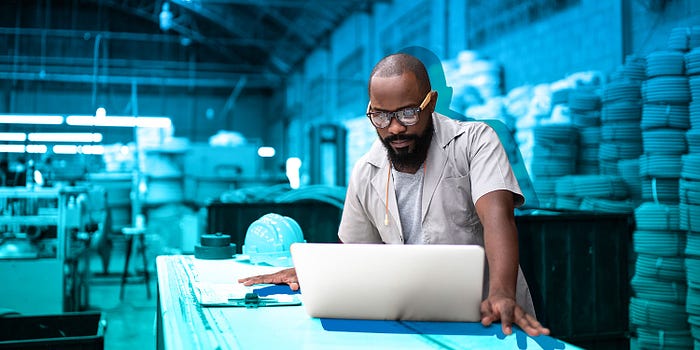How COVID-19 is reshaping the manufacturing industry
This article was contributed by James Taylor, Venture Partner at HP Tech Ventures.

As we continue to feel the impact of COVID-19 on a global scale, HP is exploring the potential long-term effects that the virus will have on every aspect of our world.
We’ll be sharing those findings through a series of articles exploring how the current pandemic is reshaping everything from our planet, to how we live our daily lives, to how a variety of industries will adapt to our new normal.
Today we’re looking at how COVID-19 is reshaping the manufacturing industry.
3D printing is helping to provide equipment for healthcare workers
In the early weeks of 2020, the novel coronavirus seemed a distant concern for many, but that distance closed as the world began to feel the virus’ exponential growth. Soon, finding personal protective equipment (PPE) became close to impossible as hospitals depleted supplies, and consumers and essential workers alike rushed to buy whatever would help keep them safe. To fill this gap in supply, 3D manufacturers of all sizes have come together to make masks, face shields, ventilators, respiratory valves, test swabs, and more. Working together with our Partners and customers, HP has printed over 150,000 parts since mobilizing on March 24, and have also made 3D printable designs freely available, including face shields, masks, mask adjusters, wrist covers, and hands-free door openers.
The FDA, NIH, and VA have partnered to work together on accelerating the creation and testing of 3D-printed equipment. The three federal agencies have also entered into a partnership with America Makes to match healthcare facilities with manufacturers. By filling immediate demand and meeting the needs of people all over the world, 3D printing could see an increase in popularity post-COVID-19, having proven its benefits and capabilities.

Companies from several different industries are temporarily changing what they manufacture
While 3D manufacturers join together to print PPE, several other companies are finding ways to contribute to the cause. Lamborghini, the luxury automaker, is using HP MultiJet Fusion technology to make lung simulators that are used to test ventilators. Ford, another car company, is also shifting to build ventilators, even reopening one of its plants to work towards the goal of delivering 50,000 by July. Beyond donating over $25 million to the cause, Nike has contributed more than 360,000 units of PPE, including full-face shields and respirators. Brooks Brothers, America’s oldest retailer, has committed to producing 150,000 masks per day, and Lego, after donating $50 million to relief efforts, has also committed to producing 13,000 masks per day.
It is inspiring to see how the manufacturing industry has galvanized to supply healthcare providers and hospitals with life-saving PPE and medical equipment, and it’s even more impressive considering that we haven’t seen this level of manufacturing overhaul since World War II.
Automation will create the path forward for domestic manufacturing
With a limited workforce and dramatic changes in demand and supply, manufacturers are facing unprecedented levels of disruption that will impact the manufacturing industry far into the future. Domestic manufacturing, in particular, will likely see a revival. Before the pandemic, Western countries had become reliant on outsourced labor and supplies, a co-dependence that created significant problems when the virus began to impact the supply chain. The reaction to this could incentivize governments to rebuild domestic manufacturing and invest further into robotics and automation, creating new jobs for digitally savvy workers.
As the pandemic continues and social distancing measures remain in place, we are also likely to see a rise in remote tools that allow specialists to interact with a limited crew of onsite personnel when handling and repairing manufacturing machines. These tools will be powered by real-time data and AI-based insights in order to enable and accelerate remote diagnostic, management, and collaboration tools. Furthermore, industrial IoT and control-tower views of data and insights will quickly become the standard for manufacturing operations.
History has shown that the manufacturing industry is nothing if not adaptable. It has had to adapt to innovation, war, and an exponential growth of emerging technologies, and there is no doubt that it will adapt to the impact caused by COVID-19.











